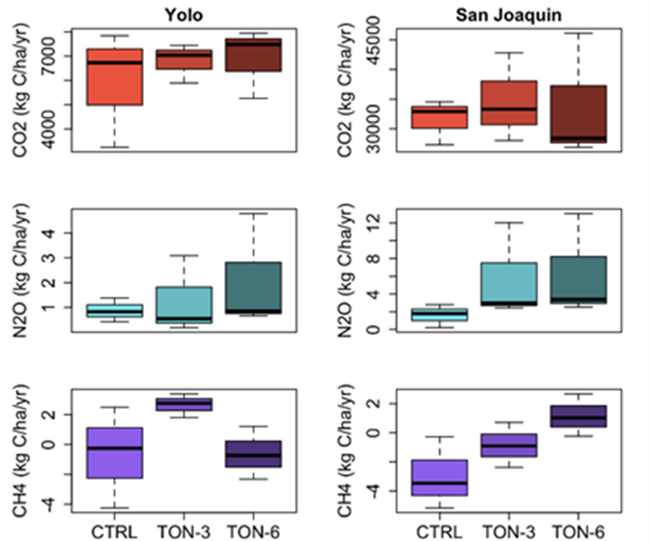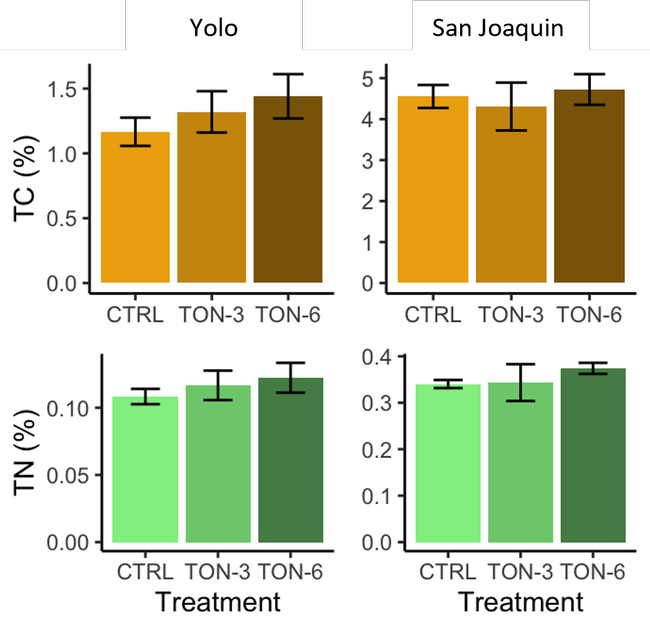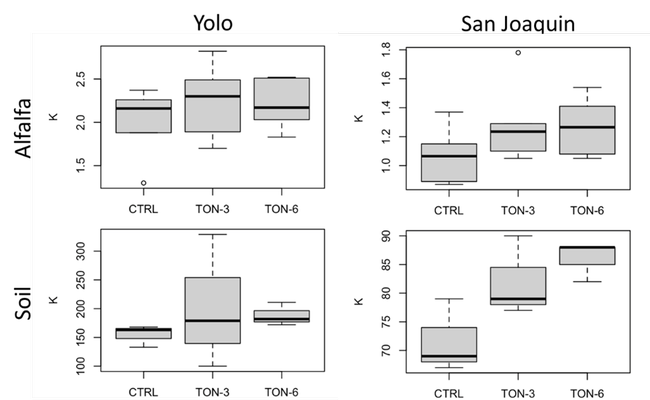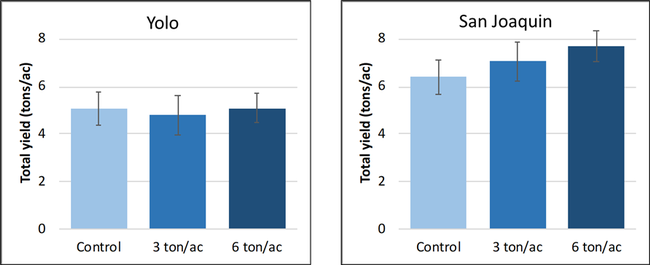The term ‘soil health' has become a common term in agricultural research and management. While most of us are familiar with testing soil for chemical properties, like nutrients, salinity, and pH, soil health also considers soil physical characteristics – like compaction, aggregation, and water infiltration – and biological characteristics – like soil respiration, active carbon, and nitrogen mineralization.
These properties influence the soil's ability to function, and enhancing these properties can improve soil functioning to grow crops and produce ecosystem services. We often relate soil health to management practices like crop rotation, cover cropping, reducing tillage, and adding compost because these have been shown to increase soil functioning in agricultural landscapes. They are also some of the practices that are financially incentivized by the CA Department of Food and Agriculture Healthy Soils Program.
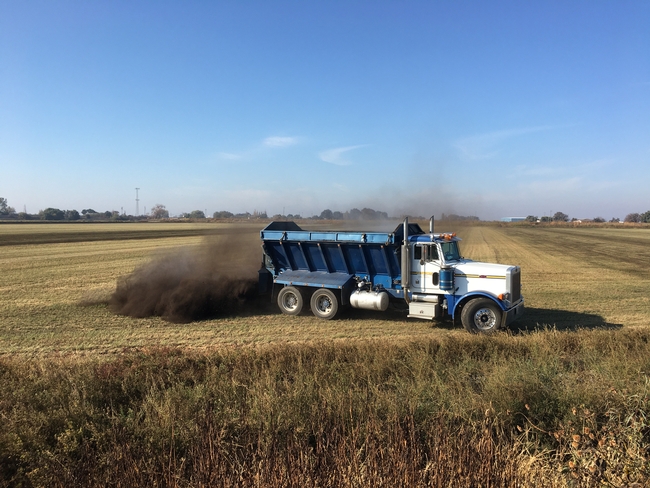
There is a regulatory framework for diverting green waste from landfills to make compost. In 2014, AB 1826 was passed in California, which required businesses to recycle organic wastes and jurisdictions to set up organic waste recycling programs to divert green waste from landfills. In 2016, AB 1383 established organic waste reduction targets (75% reduction by 2025, compared to 2014). The bill also required jurisdictions to do education and outreach. Green waste diversion is expected to reduce greenhouse gas emissions by 4 million metric tons per year and increase food recovery by 20 percent. Agricultural land could serve to receive green waste compost recovered by this regulatory framework.
Our project objectives were to learn whether green waste compost improves soil nutrient status or other soil health characteristics, whether it improves alfalfa yield or quality, or if its application affects greenhouse gas emissions from the system. Alfalfa was chosen for this study because it has a large footprint on the state's agricultural landscape and because it has a high phosphorus (P) and potassium (K) nutrient need which compost could help supply. Also, as a ‘high-traffic' crop, alfalfa soils can have poor physical traits (e.g. compaction, water infiltration), which could potentially be ameliorated with compost.
The study was conducted on commercial farms in Yolo and San Joaquin (SJ) counties. The Yolo site had a mineral soil with high clay content (approximately 50 percent clay), and the SJ soil was a mucky clay with high organic matter (approximately 8 percent). We are comparing two green waste compost rates (3 and 6 tons per acre) to the untreated control. Compost applications were annually (2020-2022) surface-applied in the fall/winter ahead of rain.
Our preliminary results indicate no statistically significant differences in total carbon and nitrogen among treatments (Fig. 2). There is a trend, however, for compost to increase carbon at the Yolo site, which is inherently low in organic matter. An interesting observation about the SJ site, where the soil is inherently low in K, is that the compost increased soil K (statistically significant, Fig. 3). The compost analysis showed that the product was roughly 1 percent K. Therefore, the 3-ton compost rate should have added approximately 50 lb of K per acre, and the 6-ton rate approximately 100 lb of K per acre. Based on the amount of change in soil K and the compost analysis, the compost was likely what contributed to the increase in soil K. This appears to be translating into higher tissue K (Fig. 3), and in turn, higher yields (though neither tissue K nor yield are statistically higher than the control, Fig. 4).
Greenhouse gas emissions have not differed among treatments (Fig. 5), indicating that the carbon that is added by the compost is not being respired from the system. There are higher CO2 emissions at the SJ compared to the Yolo site, which we attribute to the inherently higher carbon of the SJ soil. Additionally, we have observed that the soil acts as a methane sink. This is noteworthy because methane is a more potent greenhouse gas than CO2.
Based on our experiences working on this project, we have the following guidance for growers interested in applying green waste compost. While green waste compost is a relatively cheap input, transport cost can be high. In 2021, we estimated that material plus hauling cost was approximately $27/ton and spreading was an additional $10/ton. The highest demand for compost is in the fall. To ensure availability, growers should aim to purchase compost in the spring or summer and store it on-site until fall. Ordering the compost in spring or summer also tends to result in a higher quality product delivered (i.e. less trashy). Timing compost application can be a challenge (i.e. after all harvests but before soil gets too wet), so having the compost already on-site may help in getting it applied more readily. We still have more data to analyzed for this project, so more information will be forthcoming. We want to thank the growers in Yolo and San Joaquin counties for collaborating with us on this project.
